NeXT
Veteran Member
I've always like the idea that in "the modern home" there would be a terminal either on the kitchen counter or in the den that you would turn on and access a wealth of information in the form of text and graphics made from manipulation of the ASCII table. Today this idea is essentially obsolete as the cellphone can handle every task that a terminal would, plus it is not tied to the wall.
France in particular ran the extremely successful Minitel network which did exactly this and still held around 800000 subscribers by the time the plug was pulled last year. Similar systems were launched or piloted all over the earth but nothing ever came close to the success that Minitel had. Either the hardware was expensive, the subscription was too costly or the available content simply was not worth the need for the average somebody to have a terminal in their home when they had a PC which could reach any number of bulletin boards.
For comparion, I have a Televideo Personal Terminal which was designed for accessing services in the USA and a US VideoTel terminal which was from the failed pilot project for the North American Minitel network. For now however lets ignore the rebranding and consider it a Minitel unit.
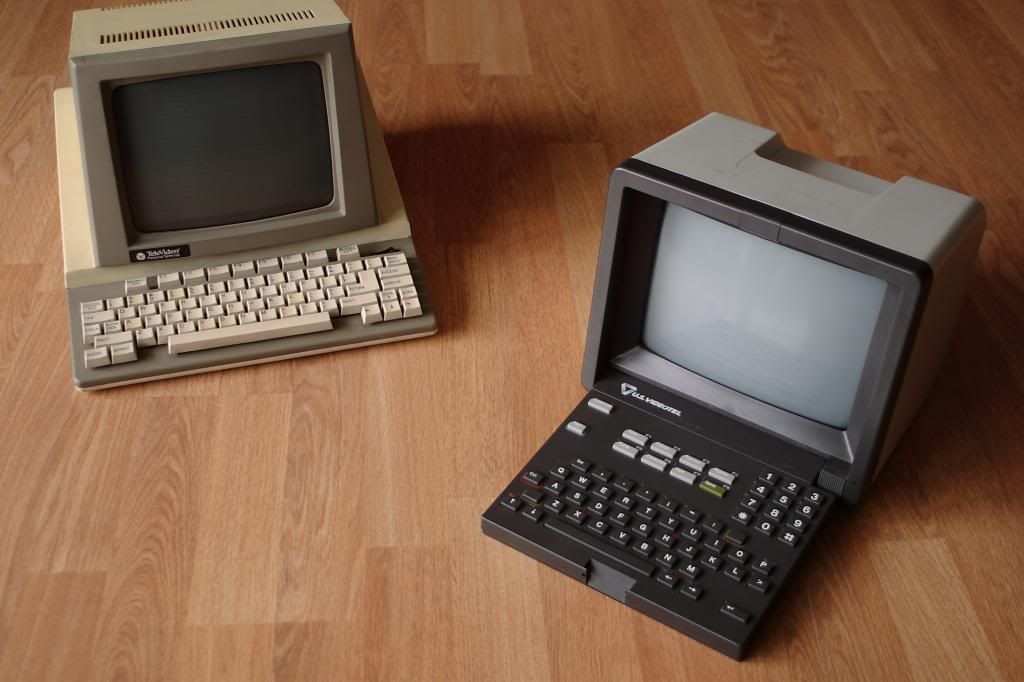
Both units are designed to be small. That way they could be placed just about anywhere. The Televideo has some space-age curves going for it but the Minitel is strictly business.
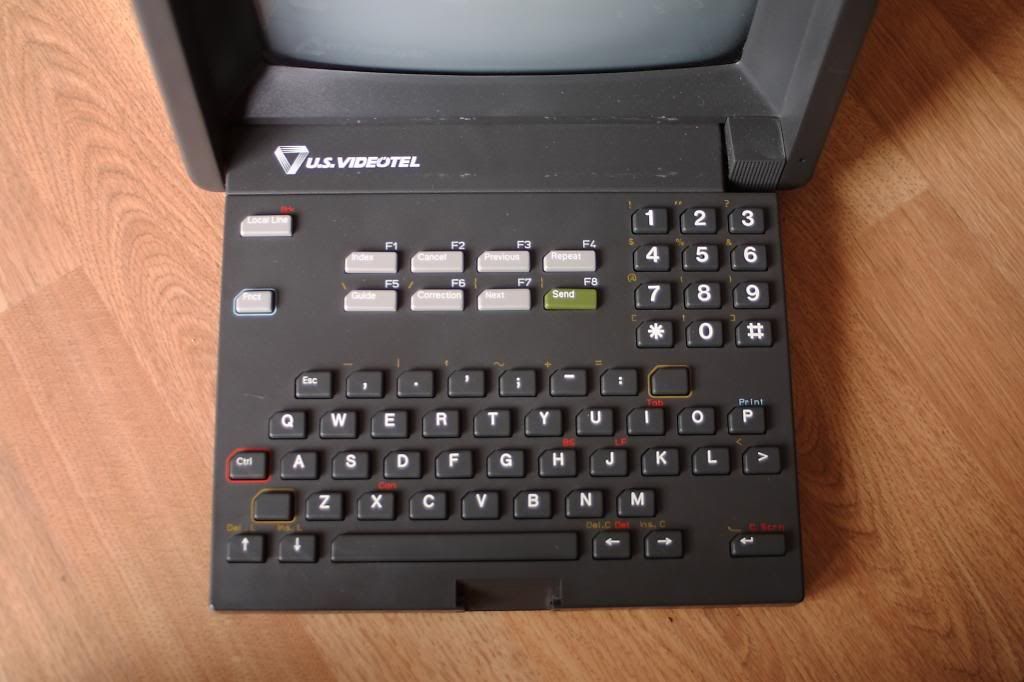
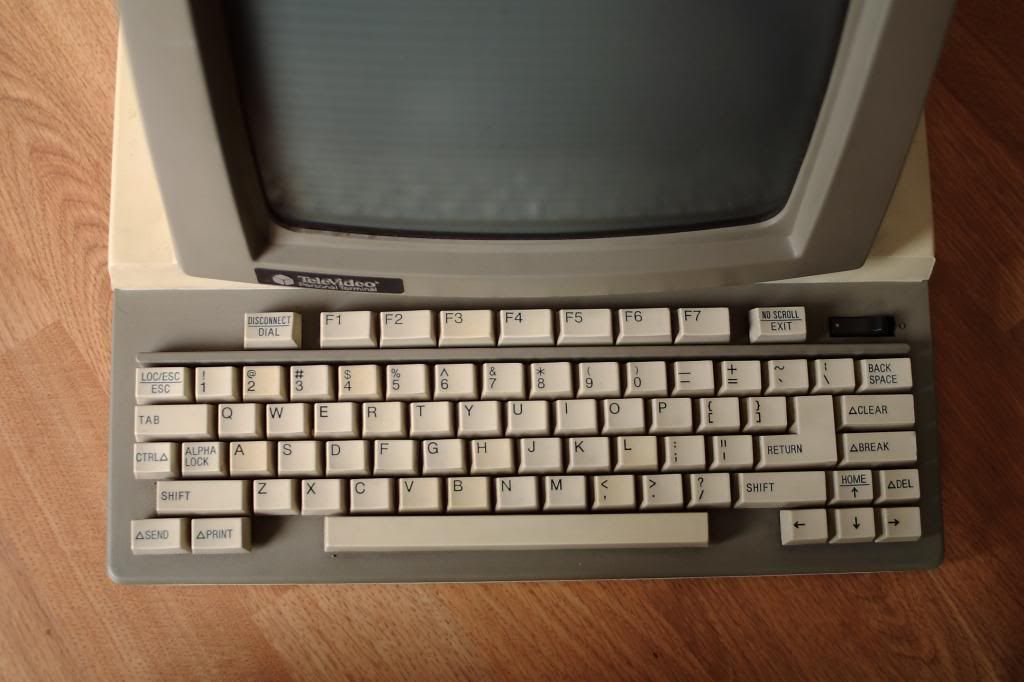
The keyboards are pretty similar too. A selection of function keys, a few custom functions and your regular QWERTY layout (AZERTY if you had a real french Minitel unit). Personally I find the Televideo's keyboard is a lot nicer to work with for long periods. The Minitel again is not being special and are pretty basic calculator-like buttons.
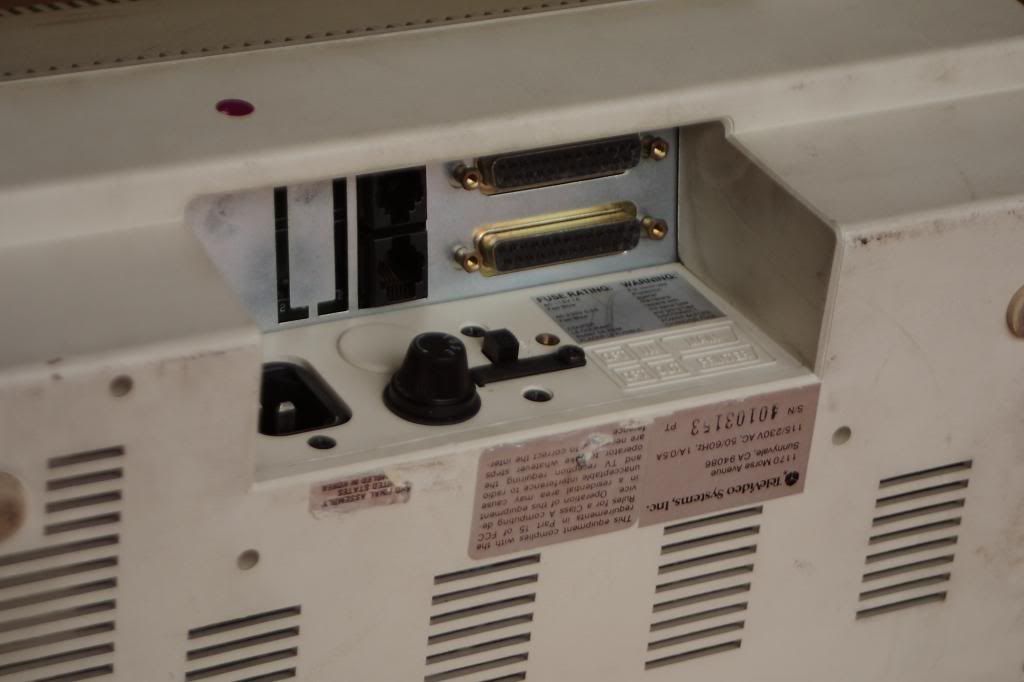

When it comes to Connectivity the Televideo has an advantage. While the Minitel has a PRINT button it has nothing that I'm aware of that you can print to. The televideo has a regular 25 pin D-sub parallel port right on the back. It also has a standard RS-232 interface so you can use it with a wide range of computers. The minitel has a serial port as well but It requires a little bit of hackwork to convert into a regular serial port.
The modem in the Minitel apparently cannot dial numbers on its own. It requires the use of another phone to start the call to the servers. The Televideo actually has a phone book so *SUPPOSEDLY* it can dial on its own however I have never figured out how that worked and no documentation for the terminal seems to exist.

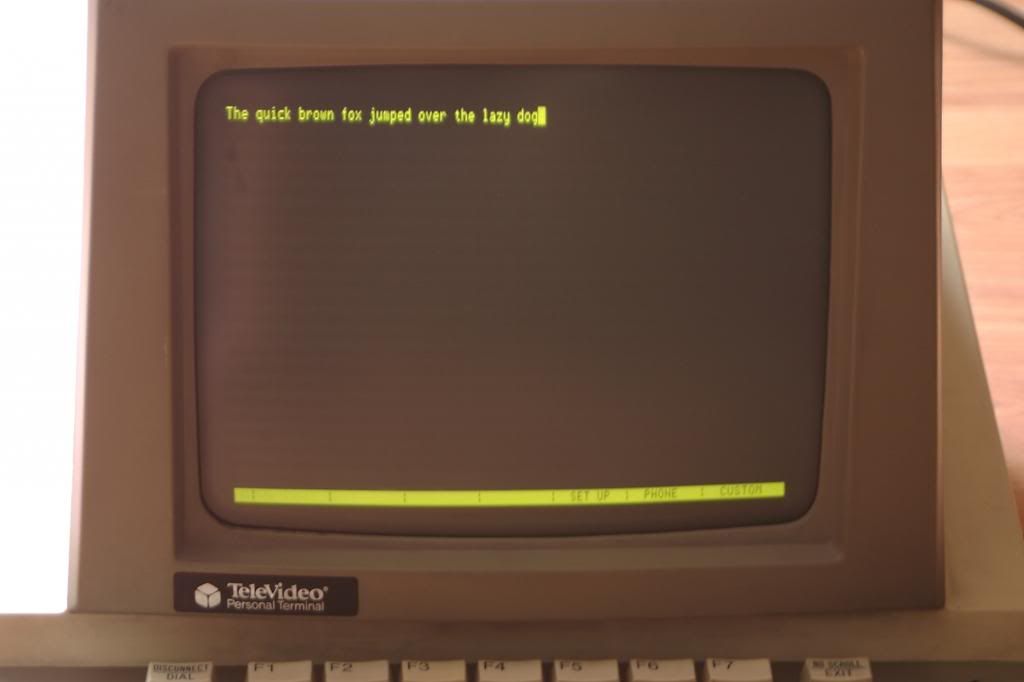
Finally, the Minitel has a white phosphor screen and by default it operates in 40 column mode. Again it's nothing special considering how cheap and dirty the terminal has been so far however it can switch into an 80 column mode presumably. The Televideo has a bizarre yellowish green phosphor display. By default it operates in 80 column mode however an assortment of settings allow for you to use both 40 column or reverse character modes.
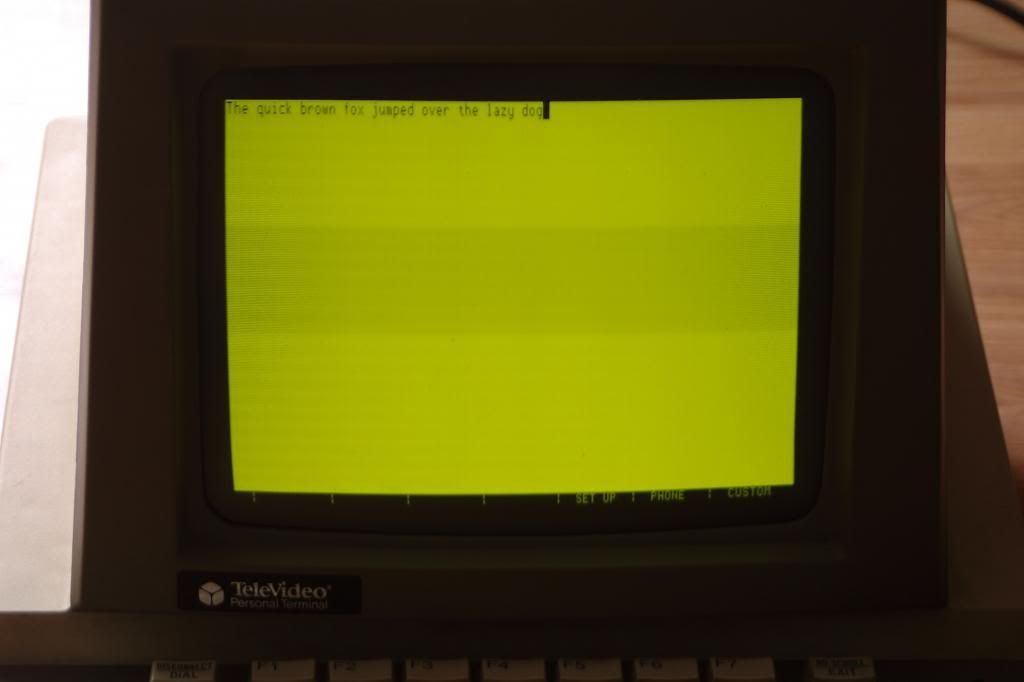
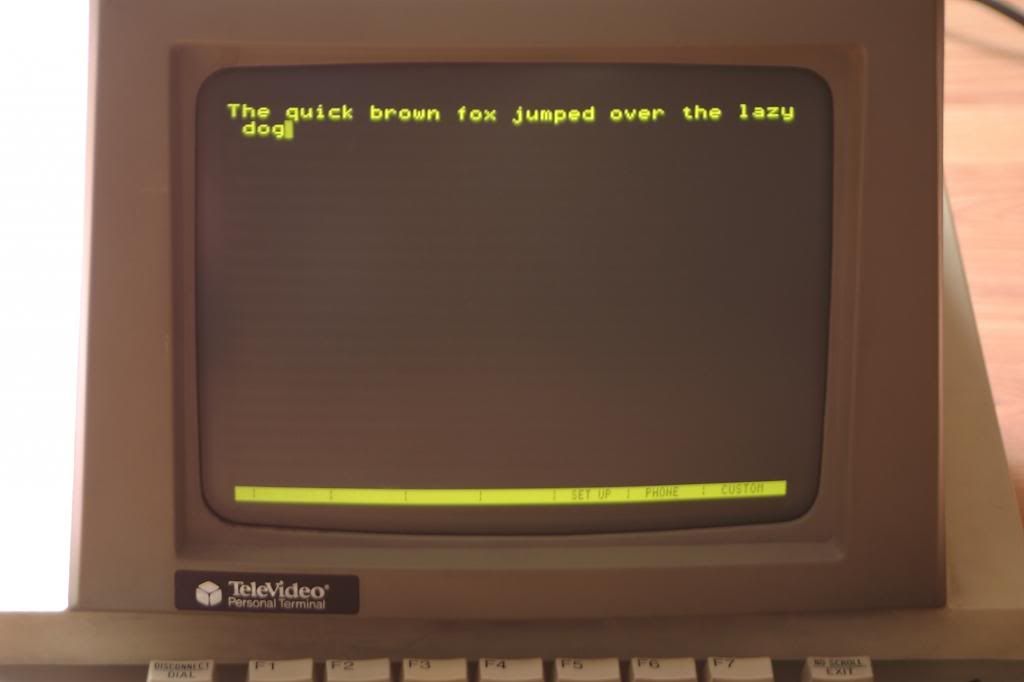
That's all there is to them. The rest of their features rely completely on the services they would of been connected to, whatever that would of been.
France in particular ran the extremely successful Minitel network which did exactly this and still held around 800000 subscribers by the time the plug was pulled last year. Similar systems were launched or piloted all over the earth but nothing ever came close to the success that Minitel had. Either the hardware was expensive, the subscription was too costly or the available content simply was not worth the need for the average somebody to have a terminal in their home when they had a PC which could reach any number of bulletin boards.
For comparion, I have a Televideo Personal Terminal which was designed for accessing services in the USA and a US VideoTel terminal which was from the failed pilot project for the North American Minitel network. For now however lets ignore the rebranding and consider it a Minitel unit.

Both units are designed to be small. That way they could be placed just about anywhere. The Televideo has some space-age curves going for it but the Minitel is strictly business.


The keyboards are pretty similar too. A selection of function keys, a few custom functions and your regular QWERTY layout (AZERTY if you had a real french Minitel unit). Personally I find the Televideo's keyboard is a lot nicer to work with for long periods. The Minitel again is not being special and are pretty basic calculator-like buttons.


When it comes to Connectivity the Televideo has an advantage. While the Minitel has a PRINT button it has nothing that I'm aware of that you can print to. The televideo has a regular 25 pin D-sub parallel port right on the back. It also has a standard RS-232 interface so you can use it with a wide range of computers. The minitel has a serial port as well but It requires a little bit of hackwork to convert into a regular serial port.
The modem in the Minitel apparently cannot dial numbers on its own. It requires the use of another phone to start the call to the servers. The Televideo actually has a phone book so *SUPPOSEDLY* it can dial on its own however I have never figured out how that worked and no documentation for the terminal seems to exist.


Finally, the Minitel has a white phosphor screen and by default it operates in 40 column mode. Again it's nothing special considering how cheap and dirty the terminal has been so far however it can switch into an 80 column mode presumably. The Televideo has a bizarre yellowish green phosphor display. By default it operates in 80 column mode however an assortment of settings allow for you to use both 40 column or reverse character modes.


That's all there is to them. The rest of their features rely completely on the services they would of been connected to, whatever that would of been.
